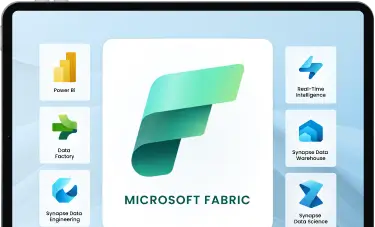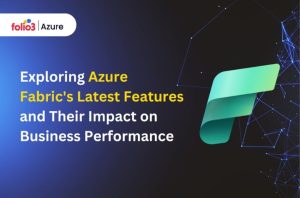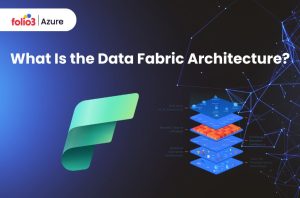Table of Contents
ToggleMicrosoft has unveiled Microsoft Fabric, a novel end-to-end data and analytics platform. Distinct from Azure Service Fabric, this platform is built around Microsoft’s OneLake data lake, yet it can also incorporate data from Amazon S3 and, in the near future, Google Cloud Platform.
The suite includes a range of tools from integration capabilities and a Spark-based data engineering platform to a platform for real-time analytics. Enhanced Power BI contributes to this ecosystem by providing user-friendly visualization and AI-driven analytics tools.
Additionally, Microsoft Fabric introduces a new no-code experience that enables users to oversee their data in real-time and initiate actions or alerts based on this data. All components are seamlessly integrated, and Microsoft plans to incorporate its AI Copilot into Fabric, enhancing its functionality further.
Microsoft Fabric aims to streamline the data analytics workflow, eliminating the hurdles of licensing, integrating, and managing various tools. This allows data analytics experts to concentrate on delivering outcomes instead of dedicating substantial time to grasp and set up the foundational technology.
Accelerate smart decisions with Microsoft Fabric's unified data and AI analytics.

What Distinguishes Microsoft Fabric?
1. Fabric Is an All-Encompassing Analytics Solution
Fabric streamlines analytics initiatives by presenting a comprehensive platform that merges various components, doing away with the necessity for intricate integration work. It delivers a smooth, SaaS-based user experience, enabling immediate sign-up and rapid realization of business benefits.
Fabric is designed to meet the unique requirements of every team engaged in the analytics journey, guaranteeing the effective operation of data engineers, data scientists, analysts, and business stakeholders.
Fabric presents seven key functionalities:
- Data Factory (preview): Offers connections to various data sources, straightforward data transformations, and capabilities for orchestrating pipelines.
- Synapse Data Engineering (preview): Supports Spark development, enables easy starts with live pools, and incorporates features for teamwork.
- Synapse Data Science (preview): Provides a complete workflow for data scientists to develop AI models, collaborate, and oversee machine learning models.
- Synapse Data Warehousing (preview): Offers a cohesive experience combining lake house and data warehouse functionalities with superior SQL capabilities on open data formats.
- Synapse Real-Time Analytics (preview): Facilitates instantaneous analysis of streaming data from sources like IoT devices and logs, ensuring high efficiency and minimal delay.
- Power BI within Fabric: Delivers advanced visualization and AI-powered analytics for business analysts, seamlessly integrated with Microsoft 365 for straightforward insights.
- Data Activator (soon to be released): Allows for real-time surveillance and alerts based on specific data patterns, eliminating the need for programming.
Fabric equips users with a full array of tools to adeptly meet a wide range of data analytics requirements.
2. Fabric Prioritizes Lake-Centricity and Openness
Fabric streamlines the management of data lakes by introducing OneLake, a SaaS-based, multi-cloud data lake instantly accessible to all Fabric users.
OneLake acts as a centralized storage solution, breaking down data silos and facilitating straightforward data discovery, sharing, and governance. It integrates seamlessly with Azure Data Lake Storage Gen2 (ADLSg2) and enables cross-cloud virtualization via “Shortcuts.” Fabric embraces open data formats, with Delta over Parquet being the standard format across all functionalities.
This approach removes the need for distinct data ingestion processes, allowing all functionalities to access and utilize the same dataset. With OneLake, users can leverage various analytics tools without the redundancy of data duplicates.
Additionally, Fabric offers a universal security framework within OneLake, guaranteeing uniform security measures across different data processing platforms.
3. Fabric Harnesses the Power of AI
Fabric incorporates the Azure OpenAI Service to maximize the value derived from customer data. Through Copilot in Microsoft Fabric, users can utilize generative AI and natural language processing to design dataflows, generate code, develop machine learning models, and visualize outcomes.
Copilot adheres to the security and privacy guidelines of organizations, ensuring that tenant data is not utilized in training the language models.
4. Fabric Enables All Business Users
Fabric is closely integrated with Microsoft 365 apps to promote a data-centric organizational culture. A key component of Fabric, Power BI, is effortlessly merged with widely-used applications such as Excel, Teams, PowerPoint, and SharePoint.
This integration allows users to effortlessly find and utilize pertinent data from OneLake within the Microsoft 365 ecosystem, enhancing their ability to extract value from their data.
Fabric turns Microsoft 365 applications into centers for discovering insights. Within Excel, users can effortlessly analyze data from OneLake and create reports using Power BI. Teams enables users to integrate data into daily activities via embedded channels, chat, and meetings.
Business professionals can embed live Power BI reports into PowerPoint slides for dynamic presentations. SharePoint offers smooth integration for distributing insights. Moreover, with the preview of Microsoft Graph Data Connect, customers can gain insights into different facets of their organization, such as customer interactions, business operations, security, compliance, and employee productivity.
5. Fabric Streamlines Expenses With Consolidated Resources
Fabric eases the process of acquiring and overseeing resources within analytics frameworks. Rather than allocating computing resources across various systems, customers have the option to secure a unified reservoir of computing capability that caters to all Fabric functions.
This strategy prevents unnecessary resource expenditure and promotes optimal use of computing power among diverse tasks. Through the adoption of shared computing resources, customers can reallocate surplus capacity from one function to another, resulting in considerable savings.
Current Microsoft analytics offerings, such as Azure Synapse Analytics, Azure Data Factory, and Azure Data Explorer, will continue to serve as powerful, enterprise-level platform as a service (PaaS) options for data analysis. Fabric introduces a streamlined software as a service (SaaS) progression designed to effortlessly integrate with these established PaaS solutions.
In essence, Microsoft Fabric seeks to streamline the data analytics journey, offer a cohesive platform for administering a range of data analytics tools, and enable organizations to concentrate on realizing their analytical objectives.


